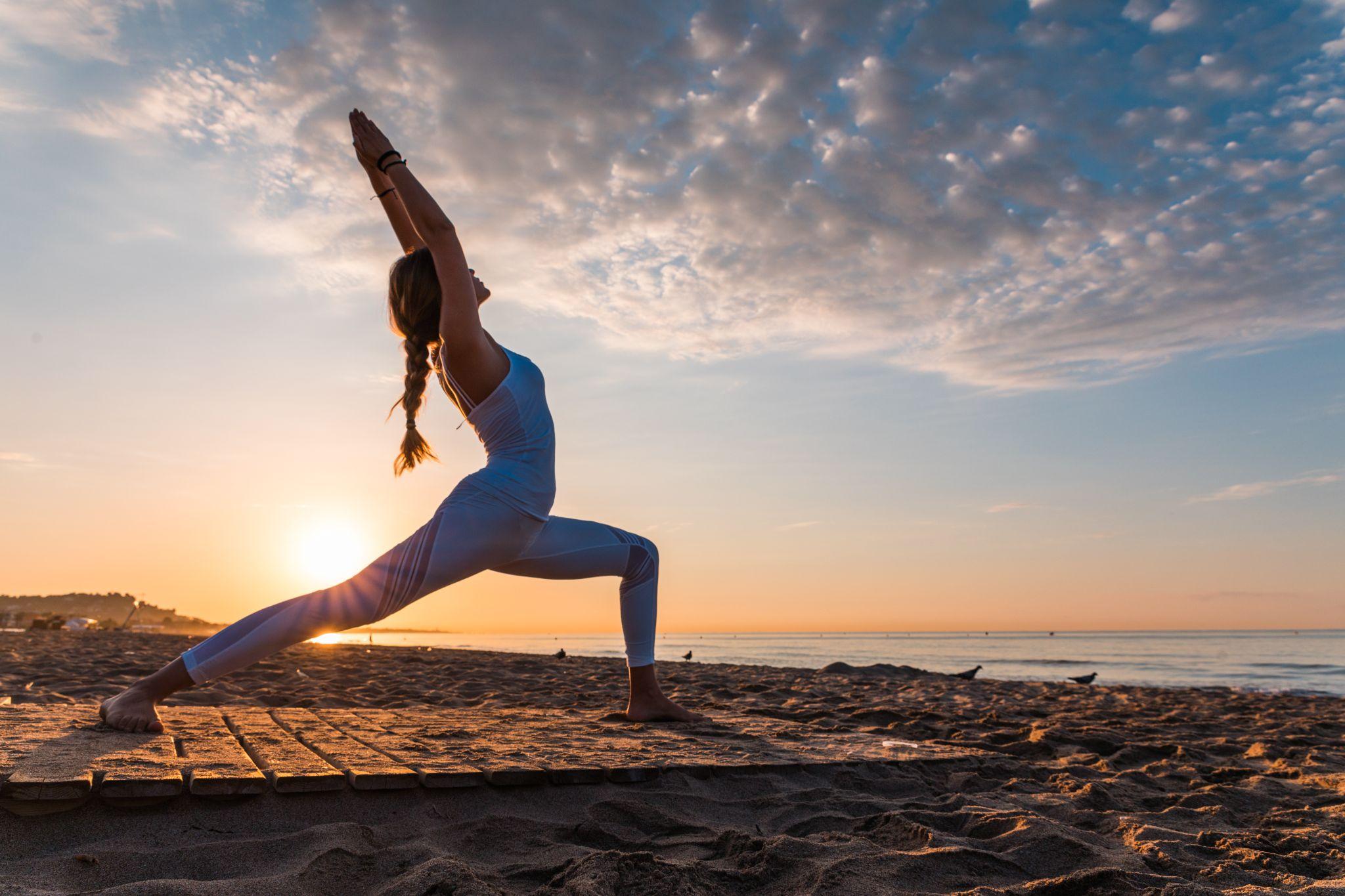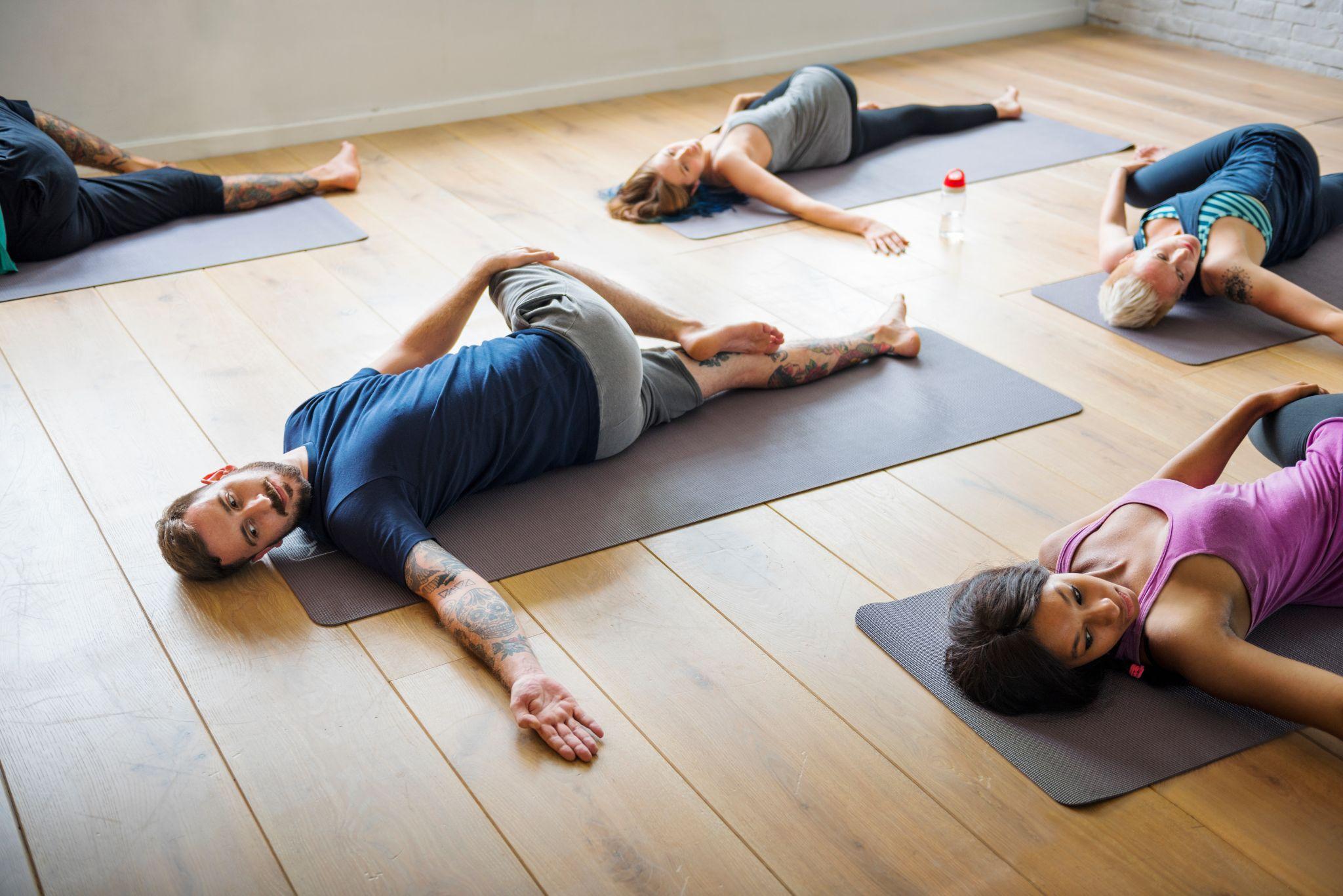Finding holistic ways to heal the mind, body, and spirit during addiction recovery is crucial. Yoga, an ancient practice with roots stretching back thousands of years, offers a path toward healing that encompasses physical, mental, and emotional well-being.
Practicing yoga encourages self-reflection, inner peace, and physical resilience, making it a valuable tool for those battling addiction. Various types of yoga can support individuals in their recovery journey, offering a gentle yet powerful way to navigate the challenges of substance use disorders and foster a sense of balance and well-being.
The Principles of Yoga for Addiction Recovery
The principles and foundation of yoga for addiction recovery are rooted in the practice’s holistic approach to healing and transformation. Yoga offers a path to self-discovery, balance, and renewal, addressing the mental, physical, and spiritual aspects of the individual.
Through a combination of physical postures (asanas), breath control (pranayama), and meditation (dhyana), yoga cultivates a sense of inner peace, resilience, and strength. It encourages the release of physical stress and anxiety by clearing mental clutter and creating space for positive change and growth.
The practice teaches mindfulness, helping individuals become more aware of their thoughts, emotions, and behaviors, and fostering a deeper connection with themselves. This self-awareness is crucial for those in recovery, as it enables them to help identify triggers, manage stress, and develop healthier coping mechanisms.
Yoga’s emphasis on discipline, patience, and self-compassion provides a supportive framework for overcoming addiction, encouraging individuals to embrace their journey with kindness and perseverance. Through its integrative approach, the benefits of yoga as part of addiction treatment and recovery offer a powerful means of achieving lasting change and well-being.
The Different Forms of Yoga
While there are many forms of yoga, we’re going to concentrate on six common types you might come across if you are new to the practice of yoga.
1. Hatha Yoga
Hatha yoga is often the entry point for beginners to the world of yoga, making it ideal for those seeking a gentle introduction or beginning their journey of recovery. Characterized by its slow pace, this style focuses on the fundamentals of yoga postures (asanas) and breath control (pranayama).
Practitioners are encouraged to hold each pose for several breaths, fostering an environment of mindfulness and physical awareness. The deliberate pace of Hatha yoga allows for a deeper exploration of each posture, ensuring proper alignment and technique. This practice serves as a foundation upon which individuals can build their yoga practice, emphasizing the importance of breath in connecting the body and mind. This can help reduce stress by regulating the central nervous system.
2. Vinyasa Yoga
Vinyasa yoga is known for its fluid, movement-intensive approach. Unlike the static nature of Hatha yoga, Vinyasa links breath to movement, creating a flowing sequence of poses that seamlessly transition from one to the next.
This dynamic form of yoga is like a dance, with each movement guided by inhales and exhales. The variability of sequences in Vinyasa yoga keeps the practice engaging and allows for a personalized approach, with instructors tailoring sequences to suit the class’s energy and mood.
The focus on continuous movement not only enhances physical strength and flexibility but also encourages mental focus and discipline, making it a stimulating and enriching practice for both body and mind.
3. Yin Yoga
Yin yoga stands in contrast to more dynamic styles like Vinyasa by emphasizing stillness and the passive holding of postures for extended periods, typically three to five minutes each. This approach targets the body’s deeper connective tissues, like fascia, ligaments, and joints, promoting increased flexibility and the release of tension.
Yin yoga’s meditative aspect is pronounced, as the extended hold times provide ample space for inner reflection and mindfulness. Practitioners are invited to observe and sit with their thoughts and emotions, making Yin an introspective practice that encourages patience and self-acceptance.
This style is particularly suited to those seeking to balance more active forms of exercise or needing a practice that supports mental and emotional equilibrium.
4. Restorative Yoga
Restorative yoga emphasizes relaxation and the gentle release of bodily tension through passive stretching. Unique in its approach, this practice utilizes various props like bolsters, blankets, and blocks to fully support the body in each pose, allowing practitioners to sink into deep relaxation without exerting effort.
The poses are held for extended periods, typically five to twenty minutes, to encourage the body to naturally open and relax. This gentle approach makes Restorative yoga a particularly accessible form of yoga, suitable for individuals of all levels, including those recovering from injuries or dealing with chronic stress.
The primary focus is on comfort and ease, making it a deeply nurturing and calming experience that decreases blood pressure which contrasts with more active yoga styles.
5. Kundalini Yoga
Kundalini yoga, often referred to as the “yoga of awareness,” stands out for its combination of spiritual and physical practices. This style integrates movement, dynamic breathing techniques, meditation, and the chanting of mantras to awaken and raise Kundalini energy from the base of the spine through the seven chakras, and out through the crown of the head.
It is both a spiritual and physical workout, known for its distinctive sequences (kriyas) that are specifically designed to generate energy, increase consciousness, and foster spiritual growth.
Unlike other forms of yoga, Kundalini places a significant emphasis on the internal experience—psychic and spiritual transformation—alongside the physical postures and practices.
6. Ashtanga Yoga
Ashtanga yoga is characterized by its high energy and demanding routine, making it unique among yoga practices for its rigorous sequence of poses. This method involves synchronizing breath with a progressive series of postures, a process that produces intense internal heat and a purifying sweat that helps detoxify muscles and organs.
Ashtanga is divided into six series, each increasing in difficulty, allowing practitioners to progress at their own pace. The practice’s structured nature offers a disciplined approach to personal development and physical fitness, distinguishing it from more fluid styles like Vinyasa.
Ashtanga’s emphasis on repetition and mastery of each pose before moving on to the next contributes to its reputation as both a deeply challenging and immensely rewarding form of yoga.
Explore the Forms of Yoga for Addiction With Lumina Recovery
Yoga, with its diverse practices, offers a holistic approach to drug and alcohol recovery, addressing the physical, mental, and emotional aspects of healing. Whether you are drawn to the gentle flow of a Vinyasa yoga class or the stillness of Yin, incorporating yoga into your recovery journey can provide invaluable support.
Remember, the most important step is to begin, wherever you are, with whatever you have. Lumina Recovery’s treatment programs and therapy services make the path to recovery uniquely yours.
Contact us today to see how we can help you or your loved one.



